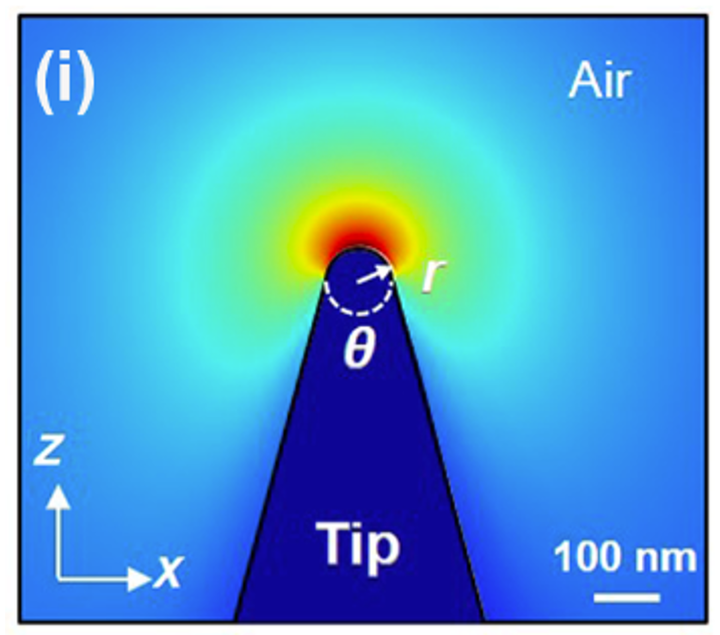Partially Metal-Coated Tips for Near-Field Nanospectroscopy

Abstract
Gold coating changes the performance of SNOM’s tip.
Scanning probes with functional optical responses are key components of scanning near-field optical microscopes. For nanospectroscopy performed at IR and terahertz (THz) frequencies, one major challenge is that the commonly used metal-coated silicon tips yield nonadjustable coupling efficiency across the spectrum, which greatly limits the signal-to-noise ratio. Here, we test the possibility of a generic design scheme for wavelength-selective tip enhancement via finite-element numerical modeling. We employ a Si -based tip with various gold-coating lengths on the top, yielding a customizable near-field field strength at the tip apex. Calculations show a wavelength-dependent enhancement factor of the metal-coated tip due to the geometrical antenna resonances, which can be precisely tuned throughout a broad spectral range from visible to terahertz frequencies by adjusting the length of the metal coating. By changing the coating pattern into a chiral helical structure on an achiral tip, we also demonstrate the usefulness of coating-length effect in designing high-performance enantiomeric near-field scanning. Our methods and findings offer interesting perspectives for developing near-field optical probes, pushing the detection and resolution limits of tip-enhanced near-field detections, such as fluorescence, Raman, IR, and THz nanospectroscopies.